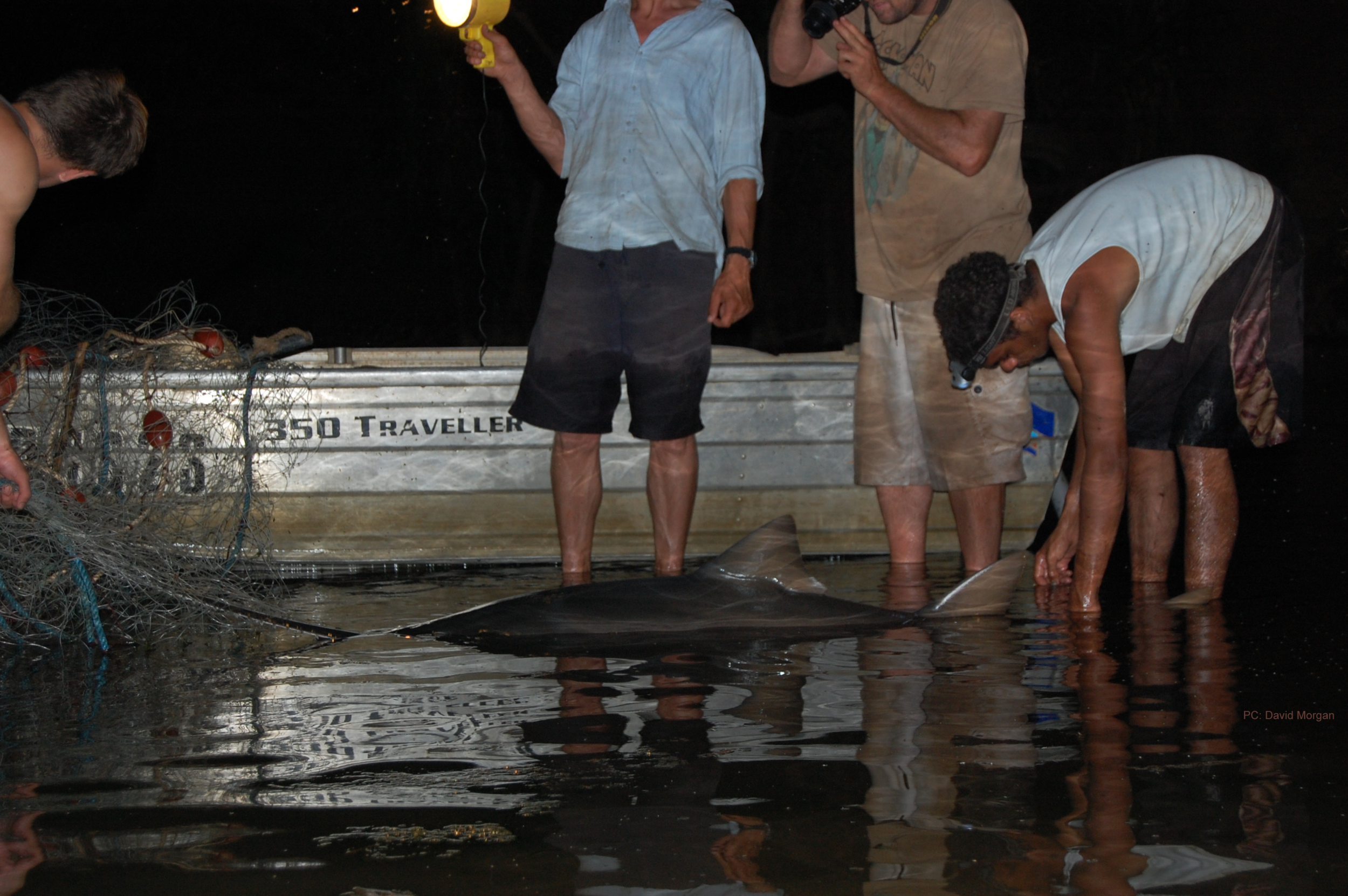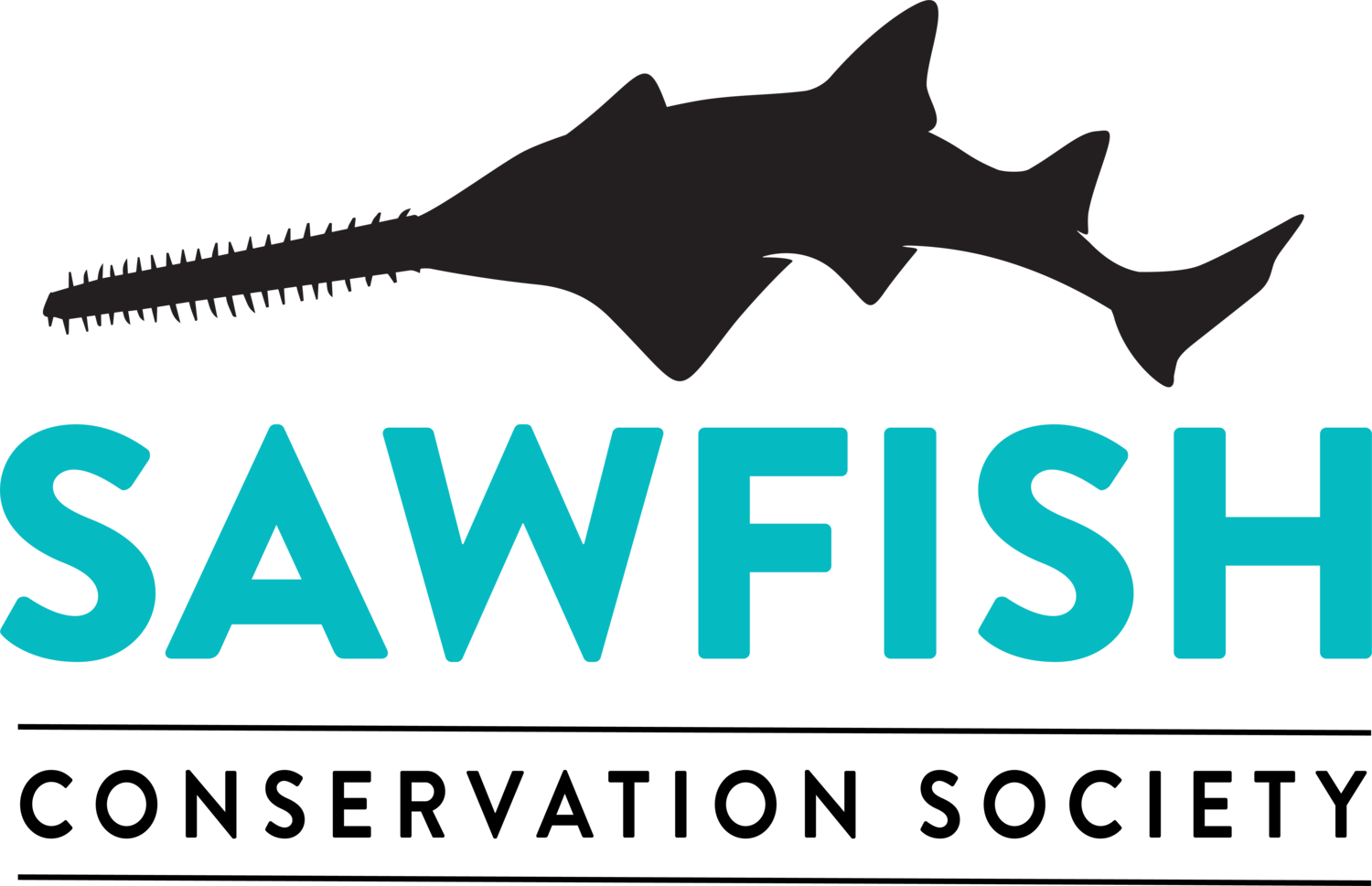
RELEASE AND REPORT A SAWFISH
Did you catch or see a sawfish? Follow the instructions below to learn how to safely release and report your sawfish encounters. Reported encounters will help sawfish researchers and managers learn and conserve these rare fishes.
1. REMAIN SAFE
A. Keep the sawfish in the water. At a minimum, keep the mouth, gills, and spiracles (the hole on top of the head) underwater if safe to do so. Sawfish will be less prone to flail if allowed to breathe.
B. Mind your safety. Do not enter the ‘strike-zone’ of the rostrum/saw. The strike-zone is the area on either side of the rostrum where the sawfish can swing laterally. An unsecured sawfish can quickly bend its body to extend this zone.
2. RECORD
A. Identify the type of sawfish and estimate its length. Use the SCS sawfish ID guides and website to identify encountered sawfishes. Objects similar in size to the sawfish can be used to estimate sawfish total length (tip of sawfish saw to tip of tail).
B. Have someone else take a picture while you work to release the sawfish. Pictures of sawfish are very helpful to researchers. However, it is more important to release a sawfish quickly.
3. RELEASE
A. If caught on a fishing line, use long handled tools to cut your line from large sawfish. For smaller sawfish, you can try to remove the hook if it is caught in the mouth, but do no attempt to do this by hand with large sawfish and do not remove the hook if it is swallowed. If necessary, just cut your line close to the hook.
B. If caught in a net, secure the net (not the sawfish) to the side of your boat, use a long handled tool or knife to free the body of the sawfish from the net and then to cut or remove the net away from the saw, starting at the base of the saw. DO NOT CUT THE ROSTRUM OFF, as sawfish need it for protection and to hunt.
4. REPORT
Report your encounter with your local fisheries authority or to the groups listed below. Make sure to note and report all details of your encounter including the date/time, species, location, habitat type, and type of encounter. Australia: report to Sharks and Rays Australia or call 1 800 298 247; Bangladesh: report to Department of Zoology, University of Dhaka at +8801301060718; Belize: report to MarAlliance at +501 226 3399; Costa Rica: report to En Busca del Pez Sierra, Universidad de Costa Rica or call +506 2511-2208 (cel +506 8593-5546) or email at marioespinozamen@gmail.com; Panama: report to MarAlliance at +507 6786-5305; USA: report to FWCC or call 1 844 4 SAWFISH, email sawfish@myfwc.com, or visit www.SawfishRecovery.org. If a sawfish is tagged, report your encounter to the agency listed on the tag. Tags used for tracking sawfish may be attached on/near the dorsal (top) fins. Do not remove the tag but note the tag number and contact phone number or email to report your encounter.
DISCLAIMER: These tips were compiled to decrease the risk of injury to fishers and sawfish. However, the Sawfish Conservation Society does not claim that these tips will prevent any harm to you or the sawfish, and does not take responsibility for the occurrence of injury in the use of these suggestions. Extreme caution should always be practiced when handling sawfish. It is also recommended for people to check with their local regulations on how to release sawfish as they may change between countries.
